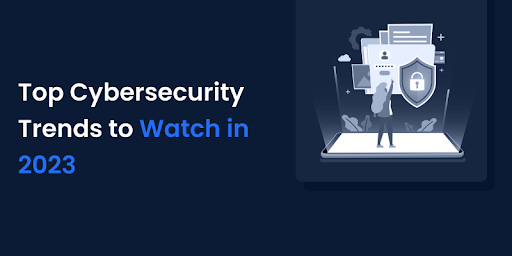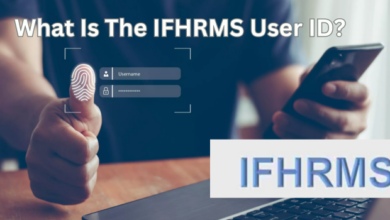Top Cybersecurity Trends to Watch in 2023

In an ever-evolving digital landscape, the importance of staying ahead of cyber threats cannot be overstated. As we step into 2023, the world of cybersecurity is poised for yet another dynamic year, with emerging trends and cyberattacks posing unprecedented dangers. To protect yourself from such threats, one must have knowledge of cyber security, therefore enrol in a Cyber Security Course. These threats extend far beyond mere data breaches; they threaten the very fabric of our interconnected world. From sophisticated ransomware attacks crippling organizations to nation-state-sponsored cyber espionage, the battleground is shifting, and the stakes are higher than ever. In this blog, we will delve into the top cybersecurity trends that demand our attention in 2023, exploring the risks and implications they bring to the forefront.
Ransomware Evolution
Over time, ransomware has evolved significantly into one of the greatest cyber threats. Early attempts involved locking victims’ computers with encryption keys before demanding payment in return. But as cybersecurity measures improved and ransomware tactics evolved further.
Modern ransomware has evolved significantly in sophistication and destructive power; encrypting not just files but entire systems to render data recovery impossible without paying a ransom fee. Ransomware operators have also begun targeting high-value targets like government organizations or large corporations for ransom demands that often exceed millions of dollars.
RaaS models allow even individuals without technical expertise to launch ransomware attacks, leading to their proliferation and creating an international cybersecurity crisis.
Supply Chain Vulnerabilities
Supply chain vulnerabilities have grown increasingly prominent as hackers exploit vulnerabilities within organizations’ vast web of suppliers and vendors to launch supply chain attacks against organizations. A supply chain attack occurs when attackers exploit weaknesses in suppliers or partners’ security to gain entry to an ultimate target, for instance by compromising a software vendor and sending malware updates out that affect all their customers simultaneously.
Such attacks are especially devastating because organizations tend to trust the suppliers they work with without giving much thought or scrutiny into how secure the goods or services they purchase from suppliers may be. To protect supply chain vulnerabilities effectively, organizations should conduct comprehensive risk analyses, monitor suppliers’ security practices closely, and implement stringent security controls within their supply chains.
Zero-Day Exploits Zero-day exploits refer to vulnerabilities in software or hardware that remain undetected and, thus, unpatched by their vendors; attackers use such vulnerabilities to gain unauthorized access or execute malicious code without being detected by them; hence the name “zero-day”, since users do not benefit from any protection due to this oversight by vendors.
Zero-day exploits pose particular concerns because they give attackers an enormous edge in exploiting vulnerabilities without leaving security teams with any ways of mitigating it or patching any vulnerabilities available for remedy. To combat zero-day exploits effectively, organizations require proactive threat intelligence gathering, intrusion detection systems and rapid incident response capabilities for effective protection from zero-day attacks.
AI-Powered Attacks
Artificial intelligence (AI)–enhanced cyberattacks represent a novel and worrying trend. Cybercriminals use machine learning technology such as artificial intelligence (AI) to increase both effectiveness and efficiency in their campaigns; for example by automating target identification tailoring messages more precisely or bypassing security controls altogether.
AI-powered attacks are difficult to identify due to their dynamic adaptability and ability to change quickly, rendering them highly adept at bypassing signature-based security systems. To counteract the threat posed by this kind of cyber warfare, cybersecurity professionals have taken to creating AI defence mechanisms against such AI attacks; creating an arms race within cyberspace itself.
Cybersecurity Skills Gap
Amid ever-evolving cyber threats, an ever-increasing shortage of qualified individuals equipped to protect organizations against them continues to exist – creating an acute cybersecurity skills gap within organizations and driving up costs for services provided. Demand continues to increase for such experts with experience protecting companies against attacks as threats become more sophisticated.
Numerous factors contribute to this cybersecurity skills gap, including the rapid expansion of the digital landscape, complex cyber threats, and demand for specialist skills such as threat hunting, incident response, and cloud security. Organizations struggle to fill vacant cybersecurity positions leaving themselves susceptible to attack.
Reaching solutions to the cybersecurity skills gap requires taking a holistic approach. This involves investing in education and training programs, supporting diversity within the cybersecurity workforce, and encouraging collaboration between academia and industry. Automation/AI technologies may also play a vital role, relieving some resource constraints so cybersecurity professionals can focus on more challenging projects.
IoT Security Concerns:
The Internet of Things (IoT) has revolutionized our everyday interactions, from thermostats and connected cars, but this convenience comes at the cost of security concerns; due to limited computing power or lack of built-in protection measures, many IoT devices can become vulnerable to cyber attacks due to limited computing power or no built-in features; potential attacks could include:
- Weak Authentication: Many IoT devices use default usernames and passwords, putting them at risk from cyber thieves. Strengthening authentication methods is imperative to prevent unapproved access.
- Data Privacy: IoT devices gather vast quantities of personal and sensitive data that, without appropriate encryption and storage practices, could expose to malicious actors posing serious privacy risks.
- Firmware Vulnerabilities: Manufacturers often release IoT devices with outdated or poorly maintained firmware that makes them vulnerable to cyber attacks, making these devices an easy target of attacks and penetration testing. Without regular updates and patches applied by their makers, these IoT devices become entry points into cyberspace for attackers to exploit.
- Lack of Standardization: IoT devices without universal security standards have an inconsistent security landscape which makes addressing vulnerabilities effectively more challenging.
Nation-State Cyber Threats:
Nation-state cyber threats refer to attacks conducted by government-sponsored hackers for political, economic, or military motives and typically involve acts such as espionage, disruption of critical infrastructure, or economic espionage. Some key aspects of nation-state cyber threats may include:
- Advanced Persistent Threats (APTs): Nation-state actors often employ APTs – long-term attacks designed to penetrate specific targets stealthily with considerable resources and expertise required – against other countries or individuals. These threats must also be managed properly for successful execution.
- Cyber Espionage: Governments often employ cyber espionage tactics in order to obtain sensitive data from foreign governments, organizations, or individuals – this may include intellectual property theft, classified documents, and trade secrets.
- Attacks Against Critical Infrastructures: Nation-state actors often attempt to access vital infrastructure like power grids, water supply networks and transportation networks with attacks that disrupt daily life and pose severe national security risks. Such attempts pose both disruption and potential national security hazards that threaten our daily existence and national security interests.
Cloud Security Challenges:
Cloud computing has transformed how businesses operate, yet presents unique security risks:
- Data Breaches: Storing sensitive information in the cloud creates concerns of unintended access or data breaches. Cloud providers and users must take measures such as encryption and access controls in place in order to safeguard sensitive data stored therein.
- Shared Responsibility Model: Cloud security is shared responsibility between cloud providers and their users; understanding these responsibilities properly will prevent gaps in security.
- Compliance and Governance: Regulated industries may vary significantly when it comes to complying with their compliance needs, making compliance management in the cloud an involved and time-consuming undertaking that needs careful consideration and planning for.
Conclusion
With nation-state cyber threats increasing and quantum computing’s transformative potential taking shape, this blog explores trends that underscore the criticality of being vigilant and adaptable in 2023. By adopting new trends, investing in technologies, and cultivating cyber awareness programs individuals and organizations alike can strengthen defenses against emerging threats. You can secure your digital future and maintain greater safety online by taking up Cyber Security Training. Let us remain proactive as we face this digital world together!





